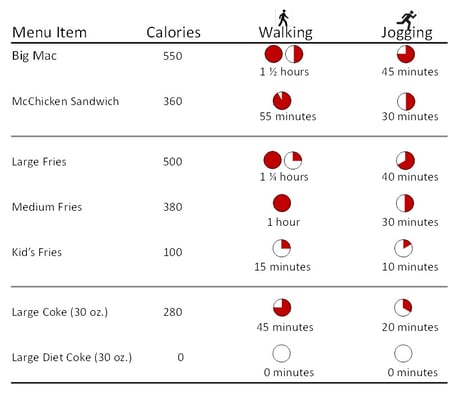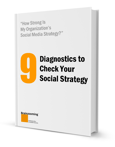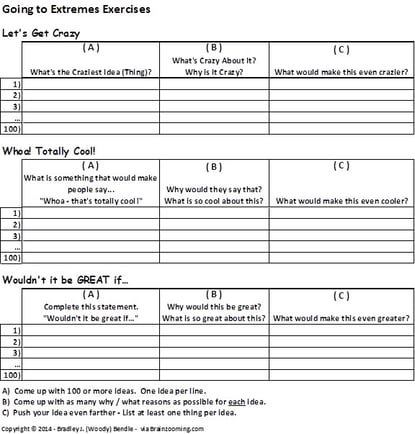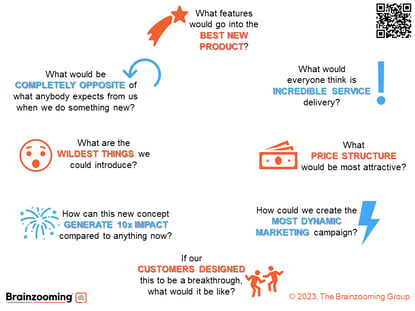Customer experience strategy and innovation expert Woody Bendle is back with his first post of this year. I was glad Woody tackled a visual thinking topic, because it's something we've touched on, but haven't spent enough time addressing. Depending on how tomorrow's post shakes out, we'll likely talk about what it takes to create a valuable infographic, such as Woody shares below. Here’s Woody!
Visual Thinking: Better Ways to Think about Calorie Data by Woody Bendle
Here we are in the New Year, and if you are like me, your selfies probably have more “self” in them now than prior to the holidays!
While many of us resolve to start each year with intentions of exercising and watching our diet more closely, have you ever stopped to consider what “watching our diet” really means?
For years, health and nutrition experts have recommended regular exercise and a balanced diet of 2,000 calories per day (pdf link). Two thousand calories is roughly what an adult human needs daily to function and maintain weight.
The exercise thing I readily understand, but I have absolutely no idea how many calories I consume in a meal, let alone a day. For all I know, I could be consuming 20,000 calories per day! If it were easier to know how many calories were in the different things I eat and drink, however, I would maybe pay more attention. After all, I am sort of a numbers guy.
Here comes the calorie data!
Before too much longer, we’re all going to have A LOT more data on calories all around us! Did you know one new regulation under the Affordable Care Act (ACA) is a requirement for restaurant chains with 20 or more locations to post calorie information for menu items?
I’m not here to pick with the ACA, nor this new requirement to provide calorie information.
But if the regulation’s intent is to really get Americans to think differently about their food choices, there are several reasons posting more numbers next to a menu item will likely not accomplish much:
- Lack of context - Most Americans have absolutely no idea the current US Dietary Guideline is a daily diet of roughly 2,000 calories.
- Lack of meaning - Most Americans have no idea what a calorie actually is nor what it means, and
- Lack of usefulness - More data doesn’t necessarily mean better (more relevant or useful) information
Granted, most people will understand something with 500 calories has five times more calories than something else with 100 calories. But so what!? And that’s my point.
How about creating BETTER information?
If this new regulation’s goal is to help people better understand tradeoffs between menu choices (any get them to change their diets), we could be more creative in how we provide the information. That is, help people understand what the data mean in a way that is more meaningful to them!
What if McDonald’s displayed menu items in the following manner?
NOTE 1: Based on an average male adult between the age of 31-50, weighing 195 lbs.
NOTE 2: Walking pace of 3 ½ miles per hour and jogging pace of 5 miles per hour.
When I see that a Big Mac, Large Fries and Large Coke is 1,330 calories I’m not entirely sure what that means. However, when the calories are translated to how much exercise is required to burn off those calories, I now have some information I can run with effectively!
Understanding the average Joe on the street has to walk 3 ½ hours or jog 1 hour and 45 minutes to completely work off that Big Mac, Large Fries and Large Regular Coke tells me something! And if he were to get the McChicken Sandwich, Kid’s Fries and Large Diet Coke (a total of 460 calories), he’d only need to do an hour and 10 minutes worth of walking or 40 minutes of jogging?
Walking 3 ½ hours vs. 1 hour and 10 minutes… hmmm.
By providing the calorie information in a way I can more easily envision and digest, I actually think about my particular meal choice differently. And that's some food for though - even though thinking doesn't apparently burn ANY calories. - Woody Bendle
Enjoy this article? Subscribe to the free Brainzooming email updates.
“How strong is my organization’s social media strategy?”
Is your social media implementation working as well as it can? In less than 60 minutes with the new FREE Brainzooming ebook “9 Diagnostics to Check Your Social Strategy,” you’ll have a precise answer to this question.
Any executive can make a thorough yet rapid evaluation of nine different dimensions of their social media strategies with these nine diagnostics. Download Your Free Copy of “9 Diagnostics to Check Your Social Strategy.”





